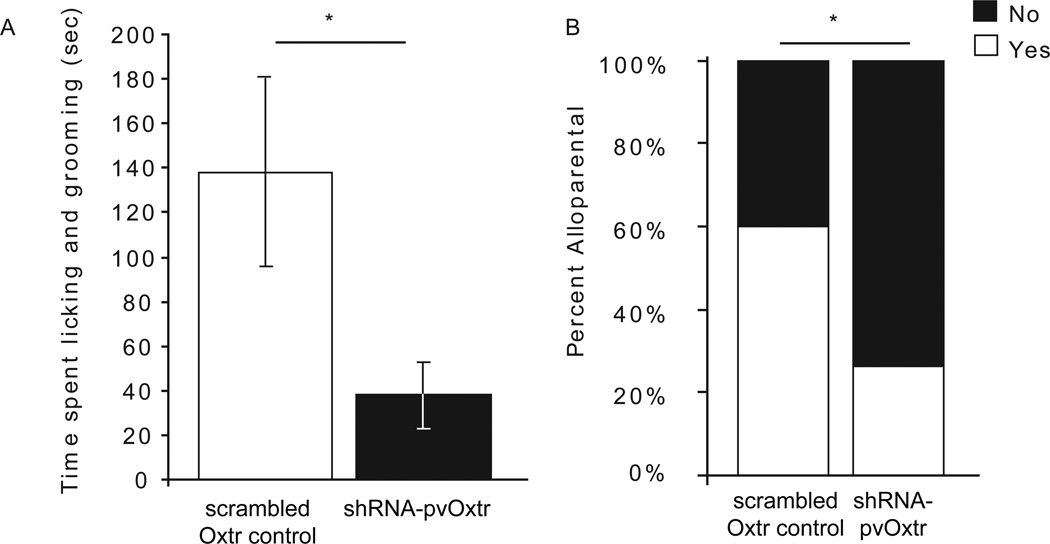Figure 2.
Graph showing the effect of OXTR knockdown on alloparental behavior. (A) Scrambled Oxtr control females spend more time licking and grooming pups than shRNA-pvOxtr females. (B) Scrambled Oxtr control females showed normal variation in propensity to engage in alloparental behavior, with about 60% showing spontaneous nurturing care. However, shRNA-pvOxtr females displayed inhibited alloparental care, indicating that decreased OXTR expression in the NAcc is directly related to decrease alloparental behavior. Asterisk represents a p-value less than 0.05. Data are represented as mean ± SEM.

